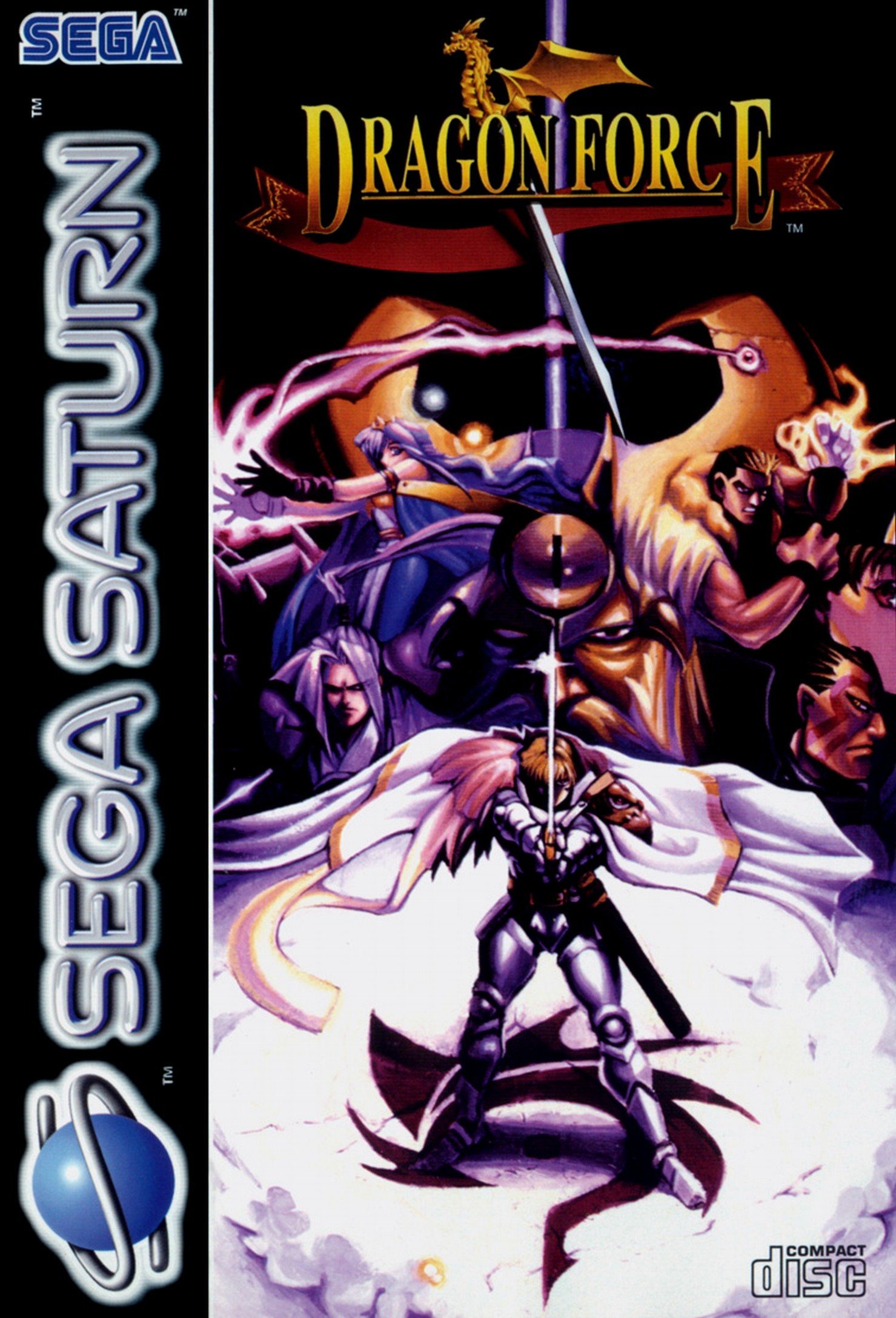
DRAGONFORCE
DragonForce, released for the Sega Saturn in 1996, is a standout title in the realm of strategy and role-playing games, known for its epic storytelling, deep tactical gameplay, and vast fantasy world. Developed by Sega and the team at J-Force, DragonForce was a bold attempt to fuse real-time strategy elements with the narrative depth of RPGs, creating a unique gaming experience.
The creation of DragonForce was driven by the vision to offer a grand strategy experience that was both accessible and deeply engaging. The development team, inspired by the rich lore of fantasy novels and the strategic complexity of historical battles, aimed to craft a game where players could truly feel like rulers of their own kingdoms. The challenge lay in balancing the game's complex mechanics with the narrative, ensuring that players remained engaged with both the story and the strategic gameplay.
DragonForce is renowned for its intricate gameplay, which combines army management, diplomacy, and real-time battle sequences. Players choose from one of six monarchs, each with their own storyline and strategic advantages, and embark on a quest to unite the continent of Legendra under their banner. The game's difficulty stems from managing resources, forging alliances, and leading armies in vast battles that can involve hundreds of troops on-screen simultaneously.
Graphically, DragonForce was impressive for its time, utilizing the Sega Saturn's capabilities to render large-scale battles and detailed character portraits. The game's visual style, with its anime-inspired character designs and vibrant world map, added to its immersive fantasy setting. The real-time battle sequences were particularly notable, showcasing vast armies clashing on varied terrains, a feat that was groundbreaking for console strategy games of the era.
The music and sound design of DragonForce added to its epic scope. The soundtrack, composed by Tatsuyuki Maeda and Tomoyuki Hamada, featured a mix of orchestral and synthesized music that perfectly captured the game's heroic and mystical themes. The sound effects during battles and in the game's menus further enhanced the immersive experience, drawing players into the world of Legendra.
In terms of design, DragonForce was innovative in its approach to storytelling and gameplay integration. The game allowed players to experience the narrative from multiple perspectives, with each monarch's campaign offering a different storyline and strategic challenges. This multi-narrative approach, combined with the vast scale of battles and kingdom management, set DragonForce apart from other strategy games of its time.
Culturally, DragonForce had a modest impact, cherished by strategy enthusiasts and Sega Saturn aficionados for its depth and ambition. While it may not have achieved widespread mainstream success, the game has since been recognized as a cult classic, appreciated for its ambitious design and strategic complexity.
Did you know? DragonForce's development team, J-Force, was named after the "J" in "Sega Saturn," reflecting their commitment to pushing the console's limits and delivering an exceptional strategy game experience.
DragonForce remains a testament to the creativity and innovation possible in video games, blending strategic gameplay with engaging storytelling to create a rich and immersive experience. Its legacy continues to inspire game developers and strategy enthusiasts, showcasing the potential of video games as a medium for complex narratives and deep tactical engagement.

